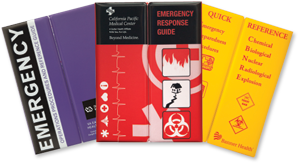Written by: Robin Hattersley-Gray
The Department of Health and Human Services Centers for Medicare and Medicaid Services (CMS) is warning hospitals that they must protect their employees and patients from violence that is increasingly happening at healthcare facilities.
The memo, issued by CMS on Monday, cited statistics from an April 2020 Bureau of Labor Statistics Fact Sheet that said healthcare workers accounted for 73% of all nonfatal workplace injuries and illnesses due to violence in 2018.
“This number has been steadily growing since tracking of these specific events began in 2011,” said the memo.
Another study conducted by the National Nurses United (NNU) found that 48% of hospital nurses reported a small or significant increase in workplace violence, which is a 57% increase from September 2021 and 119% increase from March 2021.
“CMS will continue to enforce the regulatory expectations that patient and staff have an environment that prioritizes their safety to ensure effective delivery of healthcare,” said the memo.
The memo goes on to say:
CMS believes that healthcare workers have a right to provide care in a safe setting. CMS health and safety requirements do not preclude healthcare workers from taking appropriate action to protect themselves from workplace violence. However, it is incumbent on the leadership at these healthcare facilities to ensure they provide adequate training, sufficient staffing levels, and ongoing assessment of patients and residents for aggressive behavior and indicators to adapt their care interventions and environment appropriately.
Medicare certified hospitals have a regulatory obligation to care for patients in a safe setting under the Medicare Hospital Conditions of Participation (CoPs) at §482.13(c)(2). The intention of this requirement is to specify that each patient receives care in an environment that a reasonable person would consider to be safe. For example, hospital staff should follow current standards of practice for patient environmental safety, infection control, and security. The hospital must protect vulnerable patients, including newborns and children. Additionally, this standard is intended to provide protection for the patient’s emotional health and safety as well as his/her physical safety. Respect, dignity and comfort would also be components of an emotionally safe environment.
In order to provide care in a safe setting, hospitals should identify patients at risk for intentional harm to self or others, identify environmental safety risks for such patients, and provide education and training for staff and volunteers. Patients at risk of suicide (or other forms of selfharm) or who exhibit violent behaviors toward others receive healthcare services in both inpatient and outpatient locations of hospitals. Although all risks cannot be eliminated, hospitals are expected to demonstrate how they identify patients at risk of self-harm or harm to others and steps they are taking to minimize those risks in accordance with nationally recognized standards and guidelines. The potential risks include, but are not limited to, those from ligatures, sharps, harmful substances, access to medications, breakable windows, accessible light fixtures, plastic bags (for suffocation), oxygen tubing, bell cords, etc.
All hospitals are expected to implement a patient risk assessment strategy, but it is up to the hospital to implement the appropriate strategies. For example, a patient risk assessment strategy in a post-partum unit would most likely not be the same risk assessment strategy utilized in the emergency department.
Additionally, under the Medicare Hospital Emergency Preparedness CoP at §482.15(a), a hospital’s emergency preparedness plan must be based on, and include, a documented, facility based and community-based risk assessment, utilizing an all-hazards approach. It must also include strategies for addressing emergency events identified by the risk assessment as well as address the patient population, including, but not limited to, persons at-risk.
Hospitals should also provide the appropriate level of education and training to staff regarding the identification of patients at risk of harm to self or others, the identification of environmental patient safety risk factors, and mitigation strategies. Staff would include direct employees, volunteers, contractors, per diem staff and any other individuals providing clinical care under arrangement. The Emergency Preparedness CoP at §482.15(d)(1) contains requirements for hospitals to train staff and to have policies and procedures aimed at protecting both their workforce and their patients.
Hospitals have the flexibility to tailor the training to the particular services staff provide and the patient populations they serve. CMS expects hospitals to provide education and training to all new staff initially upon orientation and whenever policies and procedures change. Additionally, CMS recommends ongoing training at least every two years after initial training.
CMS has cited hospitals in the past for failures to meet these obligations. Examples include a nurse in a unit without adequate staffing who was sexually assaulted by a behavioral health patient who was stopped only through intervention by other patients; a patient who died after hospital staff and law enforcement performed a takedown that resulted in a hospital custodian holding the patient down on the floor with his knee against the patient’s back, during which the patient stopped breathing and died; and a patient who was acting out and shot in his hospital room by off-duty police officers following the failure of hospital staff to perform appropriate assessment and de-escalation of the patient. These cases highlight systemic failures in facilities that place both patients and staff at risk.
CMS will continue to enforce the regulatory expectations that patient and staff have an environment that prioritizes their safety to ensure effective delivery of healthcare.
Contact: Questions about this memorandum should be addressed to QSOG_Hospital@cms.hhs.gov.
Effective Date: Immediately. This policy should be communicated to all survey and certification staff and managers immediately.
Article reprinted with permission from Campus Safety Magazine (http://www.campussafetymagazine.com/). To sign up for their eNewsletter, visit https://www.campussafetymagazine.com/newsletter-subscription/







